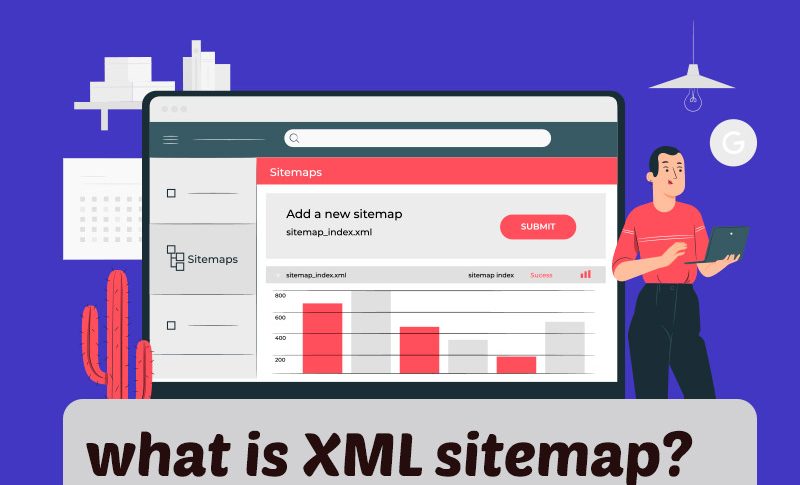xml sitemap is a file that contains a list of a website’s most significant information so that Google’s crawlers may quickly see and index it. Search engines can also use sitemaps to determine which information is more important than others.
Another type of sitemap, in contrast to this one, is HTML-based and offers a list of the site’s most significant files. Search engines can also use sitemaps to determine which information is more important than others.
To learn the structure of websites, search engines use XML sitemaps (the first type).
It’s important to remember that including the URLs of the site’s pages in the sitemap guarantees that the site will be indexed
This means that if a sitemap uses excellent XML code, provides crawlers with correct, structured URLs, and passes other search engine standards, the URLs in it will be crawled in the future. This enhances the likelihood of various pages being found in search engines.
Is a XML Sitemap Necessary?
A sitemap is useful for any website in any condition, but it is especially beneficial in the following scenarios:
- You’ve launched a new website with several new pages that are not yet well linked (internal and external links). You may be aware that Google bots and other web-based crawlers follow links and move from page to page.
- Your site is really big, and Google’s crawlers might not notice crawling some of your updated pages.
- Your site’s content is accessible via dynamic URLs.
- The archived content of your site does not correlate well with active pages.
- If your site’s pages are difficult to find or contain a lot of non-text stuff, such as Flash.
Sitemaps can be thought of as a mechanism for updating a website and submitting it to search engines.

XML Sitemap Structure
Official XML standards provided by Sitemaps.org are used by all major search engines. Here’s an example of the map site’s XML code:
<?xml version=”1.0″ encoding=”UTF-8″?>
<urlset xmlns=”http://www.sitemaps.org/schemas/sitemap/0.9″>
<url>
<loc>http://www.example.com/</loc>
<lastmod>2020-04-30</lastmod>
<changefreq>monthly</changefreq>
<priority>1.0</priority>
</url>
<url>
<loc>http://www.example.com/about-us.html</loc>
<changefreq>yearly</changefreq>
<priority>0.4</priority>
</url>
</urlset>
The importance of the sitemap file format
The Bing search engine does not accept the formats that Google does, but according to a Bing representative, everything that isn’t supported will be disregarded. As a result, webmasters may include these features in their sitemaps with ease.
A sitemap containing news material should be considered a distinct file, according to Google, because this sort of sitemap crawls more than any other.
Media RSS files are used by Google and Bing as an alternative to identifying video file meta descriptions. Because Bing also supports this file type, creating an mRSS video stream would be a good approach to save time.
Read More :How to create XML sitemap in Yoast SEO
The sitemap file contains restrictions
It’s important to understand that the sitemap file has restrictions and constraints . Among the limits are:
- Namespace
The sitemap must have a namespace, and the default namespace must be specified:
xmlns = http: //www.sitemaps.org/schemas/sitemap/0.9
- Size limit
- There should be no more than 50,000 URLs in the sitemap file.
- This file should not exceed 50 megabytes in size.
- The same addresses
The sitemap’s URLs must all follow the same guidelines. This implies that names with the WWW prefix cannot be combined with ones without it.

Conclusion
 The sitemap article was completed, and we learnt how to make a sitemap. We hope this post has provided you with answers to your queries.
The sitemap article was completed, and we learnt how to make a sitemap. We hope this post has provided you with answers to your queries.

i’m Saturn , i interested in the field of SEO and research and review of the latest techniques and methods in the world of SEO. You can read my content every day on inbatio.com


